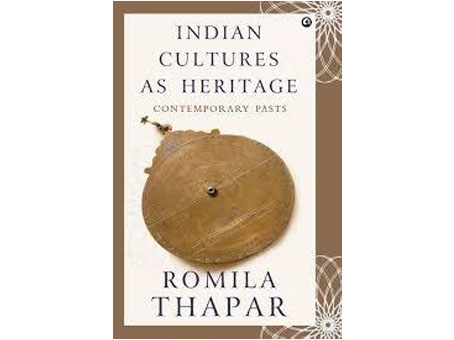
INDIAN CULTURES AS HERITAGE CONTEMPORARY PASTS
Dr. Tmt. T. Chandralekha
Former Dean of Humanities and Sciences Dr MGR Educational & Research Institute University
Chennai
The world renowned Indian authoress Romila Thaper’s yet another gem in the cultural crown of Indian history is the Indian Cultures as Heritage Contemporary Pasts. This book explicates her conception of how culture has changed from time to time and places on record her perceptions pertaining to the women of the Indian Society along with the role played by the caste in determining the attitude to Indian culture. She recorded how both colonization as well as civilization became the great reasons for cultural change. The most significant point pointed out by Thaper is that majority of the people, being of low culture and non-elite, found only a small space in delineation of civilization and strictly enforced social codes. To her, religions nationalism and technologies became the major source in determining the cultural change through the ages. Yet another challenge that caused migration, carried their cultural identity and rush to the globalization, brought in contradictory trends, while cultures of the past constantly remained as the conducive ingredient of heritage.
In Chapter I she talks about heritage that has been inherited from the ancestors and passed unchangingly to their descendents. According to her, the heritage that was cultivated and created by human efforts is the cultural heritage. Her deep analysis projects on giving priority to elite cultures overlooking the sub-ordinate and alternate culture as it happens in the emphasis of religions. Thaper suggests a debate on the subject What we mean by heritage. She opines that the rational study of history should not be just narrative but must explain the past to constructing heritage.
In Chapter II, Thaper expressed opinion that everything that Indians inherited as the heritage should be used as a definition and identity in defining the present. To Thaper, it is a
subject that has to be viewed afresh. She emphasized that while doing so, the role of the neglected items may contribute to get more enlightened vision.
In the 3rd Chapter, after deeply analyzing various religious texts, Romila pointed out about the concept of time transforming as the feature of cultural articulation.
In the 4th Chapter Romila projected an in depth depiction of science as culture and affirmed that the nature of science is not limited to any single culture.
In the 5th Chapter pointing out how culture is referred and focused primarily based on the achievements of men, Romila showcases the ways how women are kept in shadows. Throughout the chapter the authoress discussed about the status under which women of various categories lived and protruded how in the past a few women had raised their voices against such injustices. A must study book for those who wants to know about the deep intricacies and the pros and cons of the culture of India from the bygone ages till the recent past.

Recent Artcles